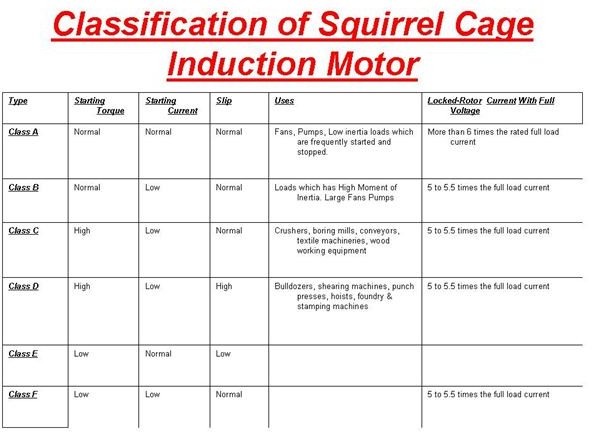Difference Between Squirrel Cage And Wound Rotor Induction Motor Pdf
• Synchronous motor: Stator poles rotate at the synchronous speed (Ns) when fed with a three phase supply. The rotor is fed with a DC supply. The rotor needs to be rotated at a speed near to the synchronous speed during starting. If done so, the rotor poles get magnetically coupled with the rotating stator poles, and thus the rotor starts rotating at the synchronous speed. • Synchronous motor always runs at a speed equal to its synchronous speed.
(a) Cutaway view of a three-phase induction motor with a wound rotor and slip rings. To better understand the currents induced in the squirrel cage as caused. Adequately higher than the load starting torque, their difference, called the. A wound rotor induction motor has a stator like the squirrel cage induction motor, but a rotor with insulated windings brought out via slip rings and brushes. However, no power is applied to the slip rings.
 Actual speed = Synchronous speed or N = Ns = 120f/P • Learn more about. • Induction motor: When the stator is fed with two or three phase AC supply, a is produced.
Actual speed = Synchronous speed or N = Ns = 120f/P • Learn more about. • Induction motor: When the stator is fed with two or three phase AC supply, a is produced.

The relative speed between stator's rotating magnetic field and the rotor will cause an induced current in the rotor conductors. The rotor current gives rise to the rotor flux. According to, the direction of this induced current is such that it will tend to oppose the cause of its production, i.e. Relative speed between stator's RMF and the rotor. Windows xp activation wpa kill torrent.
Thus, the rotor will try to catch up with the RMF and reduce the relative speed. • Induction motor always runs at a speed which is less than the synchronous speed. • Synchronous motors require an additional DC power source for energizing rotor winding.
Induction motors do not require any additional power source. • Slip rings and brushes are required in synchronous motors, but not in Induction motors (except wound type induction motor in which slip ring motors are used to add external resistance to the rotor winding). • Synchronous motors require additional starting mechanism to initially rotate the rotor near to the synchronous speed. No starting mechanism is required in induction motors.
• The power factor of a synchronous motor can be adjusted to lagging, unity or leading by varying the excitation, whereas, an induction motor always runs at lagging power factor. • Synchronous motors are generally more efficient than induction motors. • Synchronous motors are costlier.